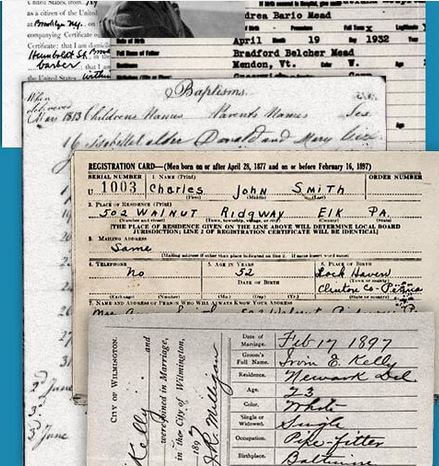Professional genealogist Michelle Patient recently took a group of Society of Australian Geneologists (SAG) members for a deep dive into FindMyPast (http://findmypast.co.uk), a service which you might already know. I have to confess, I have only used my subscription occasionally over the last few years, because I can find so much on Ancestry and Trove, however Michelle’s session inspired to me use it more and in different ways. Here’s my summary of the finer points of FindMyPast.
Subscriptions benefits
You can search free, but if you do subscribe and log in, FindMyPast will display the record images (not just transcripts) and save your searches and the records in the My Records section. Similarly, you can search their their sister site BritishNewspaperArchive for free, or you can subscribe for extra features. However, the references to many of the newspaper articles will be found in FindMySearch, so one approach to avoid another subscription is to save the references in a document, then go to SAG or a library that has a subscription.

UK records are their specialty
FindMyPast is the best source of records when researching your British or Irish ancestors. Being owned by a Scottish company, FindMyPast gets exclusive access to many smaller record sets in the UK. Significantly, it has the 1939 register made at the commencement of the World War II. The 1931 census was destroyed during the war and there was no 1941 census. Later censuses will not be available until 100 years have passed so the 1939 register is your best source for this period. FindMyPast has negotiated the release of the 1921 census which is expected early 2022, so watch out for that.
Superior Search
FindMyPast‘s search functions include more filter options for census records than other services, particularly the ability to search using a street address. Using wildcards on names will also help you find records when you’re stumped. Sometimes searching with first names and no surname at all will find what you need. You will often find records in FindMyPast that you don’t find elsewhere because it has more records and a different search engine. If you’ve hit a brick wall, try FindMyPast. Michelle reminded the group that doing a broad search first is valuable to get a feel for what’s in the records, then narrow your search.
The A-Z of record sets
Focusing your search within specific record sets can be very valuable because what you want might be buried on the last page of a broad search from the main search page. Look for the link on the screen saying A-Z of records. These sets include apprentices, merchant navy, professional gazettes, Royal Household staff and many more. you can put keywords in the search bar at the top of the record sets to look for records sets that might be of interest.
What’s Missing?
FindMyPast has various guides, blogs and resources on its website, including information about what is missing from certain record sets, such as records destroyed by fire. Don’t waste time searching for records that don’t exist!
FindMyPast also includes a family tree builder and has just included a new feature to include these family trees in the search results. Although there’s an option to add records to your tree, it isn’t very user-friendly and you don’t want to duplicate your tree building efforts. Michelle doesn’t use the tree builder, preferring to use Ancestry synchronised with FamilyTreeMaker. She suggests referring to the FindMyPast record by copying the web link (URL) and pasting it into your notes or family tree.
Thanks to Michelle for sharing her expertise. Michelle’s website is https://www.dnadownunder.com/michelle-patient/.



